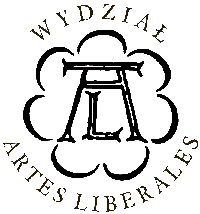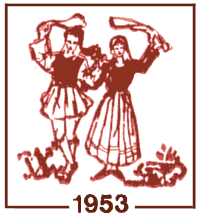The project is financed by the National Science Center and carried out at the Faculty „Artes Liberales” at the University of Warsaw in cooperation with the Dora Stratou Dance Theatre


| Testimony of: | zz missing object |
| Source | Megas 1958, 63-64 (sv. Carnival Masquerades and Plays) |
| Original text | The protagonists are the Kalogheroi, who are elected every four years among the married men of the community by the village notables. The parts of the brides are played by two young bachelors, who are under the obligation not to marry during this whole four-year period. The brides wear the traditional costume of their region and paint their faces with rouge. The Kalogheroi's costume is far more unusual : they wear a pointed bonnet made from the hide of a wolf or fox, with the tail attached to the top. The hide of a roedeer or he-goat is then fixed to the bonnet so as to cover chest and shoulders; holes are made for the eyes and mouth; finally bells are hung round the Kalogheroi's waist from a leather belt. As a weapon and symbol the first Kalogheros holds a bow made of cornel-wood, fashioned in such a manner as to shoot ashes instead of arrows. The second Kalogheros holds a phallic-shaped rod. The third female character in the play, the Old Granny, has crocus-yellow hair and a small hump on her back. She is dressed in rags and her face made to look ugly and deformed. She holds a large basket in which she has put her seven-month child (symbolized by a piece of wood). From time to time she lifts the child out, feeds it, rocks it to sleep and beats it. On Cheese-Monday morning the Kalogheroi, followed by all the other characters, walk throngh the streets to the sound of drums and bagpipes. They go into the back-yard of every house to see if all the farming tools are in their proper place. If they find disorder or irregularities, they have the right to take the misplaced object away; they will return it only after the master of the house has treated them to a sufficient amount of wine. They dance for a short while and are given money for the village-school and church, and wine for their own party. Then they move on to another house. On the way the 'policemen' arrest and chain all passers-by, and do not set them free unless they pay the ransom determined by the Kalogheroi. When the group have made the round of the whole village, they end up in the square in front of the church, where the entire village is awaiting them. It is then that the play begins. The Gipsies are seen standing in front of a furnace or fire; they blow on it and mess about with pieces of scrap iron to make a ploughshare. The Old Granny stands a little apart with her baby. The child is the fruit of a secret marriage, and fear caused it to be born prematurely. Seated on the grass, the old woman attempts to swaddle it with the rags she has stolen from village back-yards on her furtive rounds. She complains that the baby has grown too big for her basket and that, after consuming seven oven fuls of bread and several barrelfuls of wine, it keeps gnawing at her brain with its constant crying. It cries not only be cause it has not had enough to eat and drink, but also because it wants her to find it a wife. Then the first Kalogheros steps forward; all this time he has been bandying jokes with the other Kalogheros. He begins chasing the Brides, as if he were the Old Granny's prematurely-born child, suddenly grown into a man and hungering for a wife. The Brides try to hide among the crowd, but the first Kalogheros pounces boldly forward and grabs one of them. This is immediately followed by the parody of a wedding ceremony. The second Kalogheros is best man. However, when the ceremony is over, the second Kalogheros quite unaccountably turns against the bridegroom. He snatches away his only weapon—the bow—shoots a cloud of ash into his face and throws him to the ground on his back, while the bride mourns for the loss of her husband. But the murderer soon shows signs of repenting and tries to revive the bridegroom but in vain. Amid much lamenting, four men lift up the dead bride groom and take him away. But, before they have walked a yard, the first Kalogheros (the groom) sits up, wide-awake, miraculously resuscitated from the kingdom of the dead. [...] Meanwhile, the village clerk has placed a plough in front of the church. The two Gipsies take the plough from him and present it in pomp to the Mayor of the village as the newly-made instrument which they have been pretending to forge over the furnace. A new yoke, decorated with flowers and made every year especially for this purpose by the young men of the village, is attached to the plough, and the two Kalogheroi, as docile as oxen now, come forward to be har nessed to it. (Dawkins describes the scene differently: the two Brides, with the first Kalogheros between them, play the part of the oxen.) Amid deep, awed silence the voice of the Muchtar (the headman of the village) is heard. He takes a handful of grain from his bag and scatters it across the square : "May wheat be 20 piastres the bushel !" he cries. Then after a while : "Five piastres a bushel of rye!" Then again: "Three piastres a bushel of barley!" And so on until the plough and 'oxen' have made a full circle round the church-square. Meanwhile, the onlookers reverently answer each announcement with: "Amen, O God, grant that the poor may eat ! Yea, O God, grant that the poor folks be filled!" The performance ends with danc ing on the square. The two Kalogheroi lead the dance, in double and triple circles, until late at night. |
| Region of occurence | Vizyi, Thrace |
| Function | entertaining, ritual, symbolic, |
| Comment | apokries – Thrace |